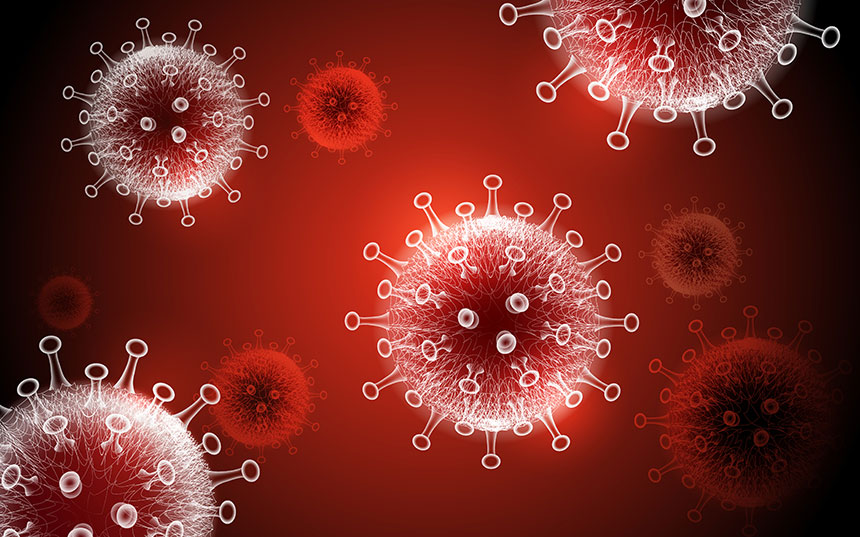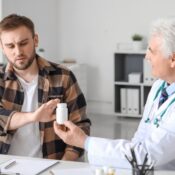“Your Health Checkup” is our online column by Dr. Douglas Zipes, an internationally acclaimed cardiologist, professor, author, inventor, and authority on pacing and electrophysiology. Dr. Zipes is also a contributor to The Saturday Evening Post print magazine. Subscribe to receive thoughtful articles, new fiction, health and wellness advice, and gems from our archive.
Order Dr. Zipes’ new book, Bear’s Promise, and check out his website www.dougzipes.us.
In my last column I presented COVID-19 information based on credible science that cut through the “fake news” offered largely from politicians. The enthusiastic reader response convinced me to write a second column with the same goal.
1. Six feet of separation may not be enough
Six feet separation, especially without facial covering, may be insufficient to prevent infection by someone with COVID-19. Before the virus invades the lungs, it replicates in the throat and can be contained in droplets from a cough that can travel 16 feet, and from a sneeze traveling 26 feet.
Heavy droplets fall to the ground due to gravity, but smaller particles that break up from the cough or sneeze can become aerosolized and hang in the air for many minutes. Even more importantly, these aerosolized droplets can form from simple breathing or speaking and can remain suspended in the air to drift with air currents and pose an inhalation threat at considerable distances, particularly in enclosed places. It is possible the droplets may drift around you if you are moving and create air currents.
Scientists in a recent study found that when a person said the words, “stay healthy,” in a normal voice, numerous tiny droplets were emitted from the mouth and increased in amount with the loudness of the voice. A damp washcloth held over the mouth when the same phrase was uttered significantly decreased the amount of aerosol. The scientists did not measure virus particles in the droplets.
I would suggest separating as far away as possible from others not in your household, staying out of closed, small rooms in public places as much as you can, and wearing a facial mask when out.
2. Hospital admissions for other diseases like heart attacks, strokes, and cancers have fallen
Perhaps due to fears of contracting COVID-19 infections, or fears of utilizing a room or health care time better saved for COVID-19 patients, reports suggest a recent drop in admission of patients with serious diseases, including about a 40 percent decrease in heart attack admissions alone in the U.S. Such delay of essential health care for serious diseases is causing a health care crisis of its own. Most heart attacks and strokes are caused by reduced blood flow to a region of the heart or brain that kills vital tissue in those organs. Prompt restoration of blood flow is the most important approach to preventing tissue death and minimizing the size of the heart attack or stroke. Speed is essential; the faster the patient is treated increases the amount of tissue that can be saved, which increases the chance for survival and decreases the risk of complications.
Patients should call 911 immediately if they experience symptoms of a heart attack, stroke, cancer or any other serious illness, despite this pandemic. It is also important in these stressful times to maintain a healthy lifestyle with regard to diet, exercise, taking medicines, and all the important issues addressed in previous columns (see my earlier columns on 4 Suggestions for Better Health, 2 Simple Things that Might Save Your Life, and Blood Pressure, Kitchen Germs, and Antibiotic Resistance). Remember, COVID-19 doesn’t just affect lungs. It can also impact heart, liver, GI tract, blood, kidneys, eyes, brain, taste, and smell.
3. Possible good news
Many new drugs are being tested against the COVID-19 virus, and, while no proven therapy yet exits, there may be some preliminary good news. A drug called remdesivir, used to treat Ebola, has shown important anti-coronavirus action in test tubes and in early clinical studies. At the University of Chicago, 125 people with COVID-19 were treated with daily infusions of remdesivir. Preliminary observations indicated rapid recoveries in fever and respiratory symptoms, with nearly all patients discharged in less than a week; two patients died.
In another study of patients hospitalized for severe COVID-19 infection who were treated with remdesivir, clinical improvement was observed in 36 of 53 patients (68 percent); seven patients died.
Randomized, controlled trials of chloroquine and hydroxychloroquine, anti-malarial drugs, are also under investigation. So far, the results have been mixed and inconclusive. A potential side effect of combining chloroquine or hydroxychloroquine with the antibiotic azithromycin, as has been suggested, is a harmful effect on the electrical system of the heart that can lead to heart rhythm problems and even sudden death (https://www.crediblemeds.org), as found in a recent trial of 81 Brazilian patients.
Additional randomized, placebo-controlled trials will be critical to determine the true benefits of new drugs in COVID-19 populations. There are over 1500 studies planned or in process.
Finally, convalescent plasma containing antibodies from patients who have recovered from COVID-19 infections has been helpful in a small number of patients, though the efficacy of COVID-19 antibodies may not be as great as in other diseases.
Ultimately, we need a vaccine to protect us from getting infected in the first place. That may be more difficult to develop than we first thought because antibodies may not be that effective in clearing the virus from the body. Also, the virus can mutate, reducing the vaccine’s effectiveness. Nevertheless, vaccine development is the direction medicine has to take if we’re ever going to be safe from COVID-19.
Featured image: Shutterstock
Become a Saturday Evening Post member and enjoy unlimited access. Subscribe now



